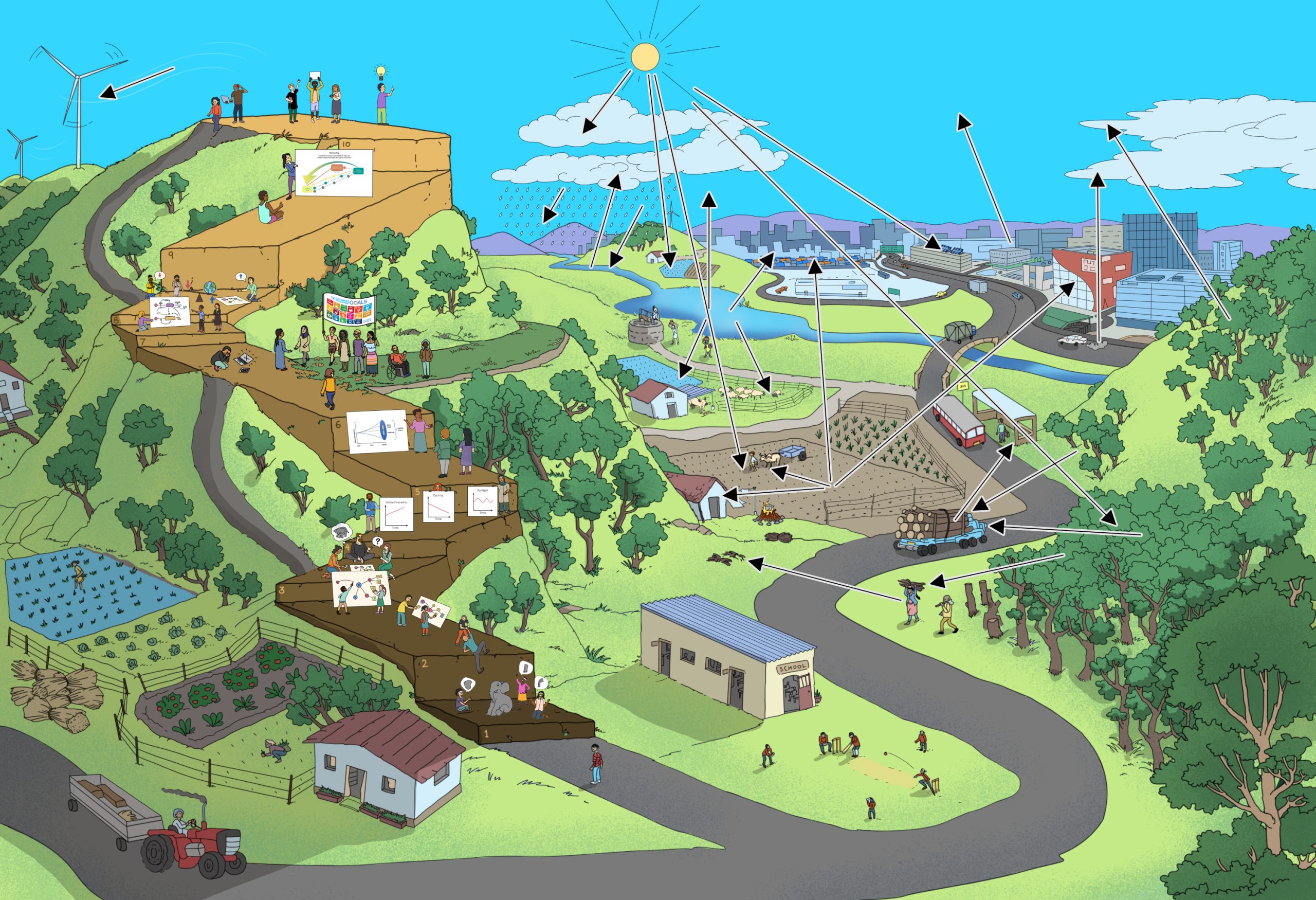Systems thinking is the ability to describe and/ or visualise a part of a complex reality, express that part of reality as a model, understand the model as a system, use the model to explain the behaviour of the system, anticipate the behaviour of the system, and evaluate its impacts on sustainable development, identify potential points of, and types of interventions, generate options to act, assess their impacts in the frame of sustainable development, and decide whether further actions are necessary or not.
1. What does this mean?
In this Step, learners understand that systems can be changed in different ways, according to the intention and the manner of use of leverage. One goal of enhancing systems understanding is to enable us to make decisions and take actions on a robust base of knowledge.
People intervene in systems without adequate knowledge, which result in impacts that were neither anticipated nor imagined. For example, the pumping of carbon dioxide into the atmosphere from the beginning of the industrial revolution was an unknown intervention in the earth’s climate system, which has had unanticipated impacts. On the other hand, when a system is well-understood, it may be possible to design interventions with specific elements of the system, that cause a specific change in the overall behaviour of the system and result in an intended output or impact.
2. What is the aim?
To enable learners to:
- Understand that humans continuously intervene in many subsystems of the global system, and therefore in the global system itself,
- Understand that interventions done, and are being done everywhere, knowingly, unknowingly, and often with partial knowledge.
- Understand that systems learning enables humans to decide and act to change systems, with purpose.
- Use knowledge about leverage points to design and make interventions that change the functioning of systems
EXAMPLES FROM KALYAN
Use the list of potential leverage points to the systems of the chosen topic.
| Ip | cotton | potato |
|---|
4. Activities, tasks and suggested learning methods
In Step 7, learners understood that the systems can be changed through leverage points, for example through a paddle in a boat. In Step 8, learners take up tasks to understand that with the same leverage point, systems may be changed in different ways. For example, the paddle in a boat may be used to turn left, or turn right, or go straight ahead.
In this Step, learners have to use the output of Step 7 – the identification of leverage points – and prepare a description of one or more potential interventions to transform the system.
The learners take up two tasks.
Task 1 – The learners may be explained the example of different directions of change at a leverage point by using the boat and paddle example. They may then be asked to identify similar examples, such as certain parts of vehicles, tools of different kinds, and the different ways they may be used to change the systems behaviour.
Task 2 -The learners should apply their understanding of different uses of leverage points and identify two or more options to change system behaviour.
Learners may try to identify leverage points for one or more of the following situations, in the chips or jeans examples:
- Change (increase or decrease) the quantum of profits of farmers
- Change the quantum of chemical inputs in agriculture
- Change the expenditure on jeans or chips by households
- Change the health status of young people.
Learning methods include:
5. Conclusion
- Reflect on what is learnt, either by summarizing the activity or asking learners to do so.
- Reflect on the crucial learning that systems can be changed
- Ask the group to think about and share further questions about the system
- The answers to these further leading questions may be discussed in the next steps
Illustration of staircase model for further leading questions
6. Suggested Further Leading Questions
- Is there a possibility to change a system in an intended direction of sustainable development?
- If yes, how may this be done?


